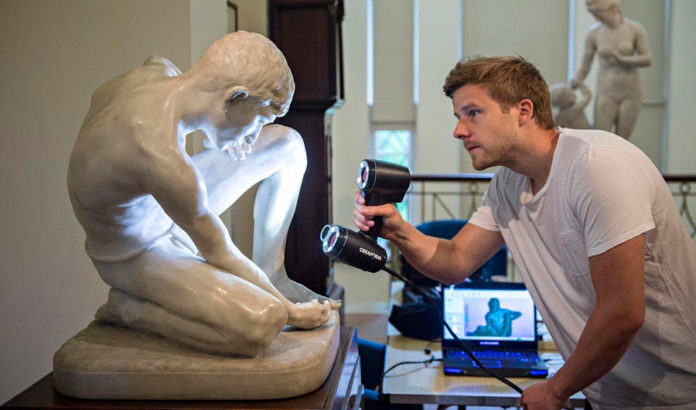
Native to Innsbruck, artist Oliver Laric, 34, is one of the most internationally acclaimed and discussed artists of his generation.
His initial rise to fame was due primarily to his work displayed on the internet. For many years he explored the artistic possibilities that the digital network has to offer. His website also served as his studio, theory workshop, and gallery and it attracted a considerable international following. The co-founded and operated internet art project “vvwork” acted for years as a viral launching pad for numerous, often under cover art expeditions into the World Wide Web – and Laric loves misleading his audience. When following his trails in the internet, beware of the fakes – he has himself laid many false trails, including circulating biographies of himself.
With many of his pieces he provokes discussions on the positive and culture-preserving aspects of copying. “I see no need to produce new images myself. Everything that I need already exists. It’s only about finding it.”, stated Laric. One creates a new image by using an already existing one – there are numerous videos available on Youtube illustrating this point of view very clearly.
Laric knows how to comically take the debate on original vs. copy to the extreme. For example, a few years ago for the exhibit “based in Berlin”, he had perfect Chinese copies of the BMW X5 placed on pedestals as works of art, the import of which into Germany is prohibited by law.
Laric does not care much for authorship. He says that ignoring copyright and art market debates is good for his health and happiness. Equipped with a 3D scanner, he digitalised works of art from the Collection Museum in Lincoln, UK, as well as the KODE Art Museum in Bergen digitalised and made the scans publically available.
The Austrian Cultural Forum in London dedicated an exhibition to Laric under the title: “Giving Away the Moulds Will Cause No Damage to His Majesty’s Casts”. And the exhibit is IRL, because Laric seems to have somehow already moved into the Post-Internet Era of art.
Editor’s note: much of the information in this article has simply been acquired from the internet and recompiled for your reading pleasure.











